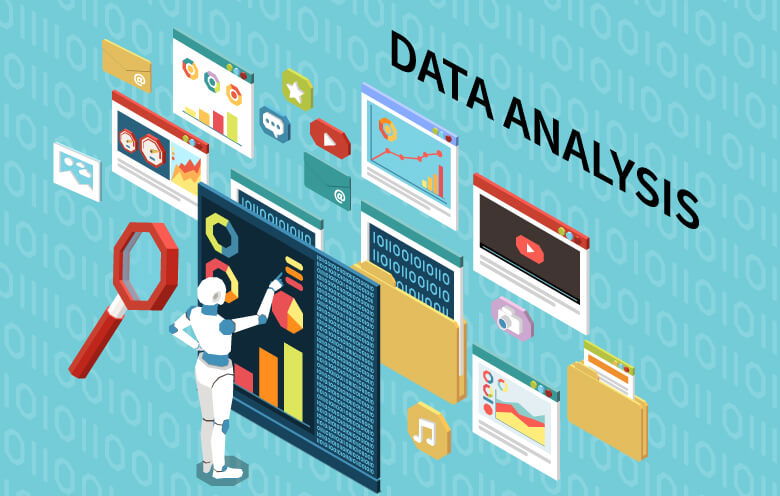In the digital era we live in, data holds immense value. Businesses that can effectively collect, store and analyze data have a clear advantage over their competitors. However, it’s important to note that data is only as valuable as the insights it can provide. This is where MLOps (machine learning operations) and data analytics come into play.
Some repercussions of not implementing MLOps and data analytics
Without MLOps and data analytics, companies face several challenges that can significantly impact their operations. These challenges include:
- Lost revenue: Without a deep understanding of customer behavior, businesses may miss out on opportunities to increase sales and generate revenue.
- Increased costs: Not deploying and monitoring machine learning models can result in increased costs for organizations.
- Reduced efficiency: Businesses that cannot optimize their processes may find themselves operating less efficiently, which can hinder their overall performance.
- Damaged reputation: Inability to detect and prevent fraud can lead to damage to a company’s reputation, impacting customer trust and loyalty.
- Inefficient marketing campaigns:Without the ability to effectively target their marketing campaigns, firms may waste money on campaigns that fail to reach their intended audience.
- Poor customer service: Difficulty in tracking customer satisfaction can prevent businesses from identifying and resolving issues that are causing customer dissatisfaction.
- Increased risk of accidents: Without the ability to identify and mitigate risks, organizations may be more susceptible to accidents and other safety hazards.
However, by implementing MLOps and data analytics, businesses can overcome these challenges and achieve several benefits, such as increased ROI, improved customer satisfaction and a competitive advantage.
With a wealth of impressive statistics and a diverse array of practical examples, let’s delve into how the integration of MLOps and data analytics can revolutionize return on investment (ROI).
A study by McKinsey found that companies that use MLOps and data analytics can achieve a 30% increase in ROI. Also, another study by Gartner found that 80% of organizations that use MLOps and data analytics are able to improve their customer satisfaction.
Before we dive into why your business should consider using MLOps and data analytics, let’s first understand what they are.
What is MLOps
MLOps, short for machine learning operations, is a set of engineering practices that combine machine learning (ML) and DevOps (development and operations). It automates the entire lifecycle of machine learning operations to ensure that ML models are reliable and perform well over time.
Here are some of the key components of MLOps:
- Data preparation
- Model training
- Model deployment
- Model monitoring
MLOps is a complex and challenging field, but it is essential for the successful deployment of machine learning models. By following the best practices of MLOps, you can ensure the reliability and continued performance of your machine learning models.
Suggested: Why you need MLOPS for your business survival in the AI era
Now, let’s move on to data analytics.
What is data analytics
Data analytics is the process of collecting, cleaning and analyzing data to gain insights that can be used to make better decisions. It is a broad field that encompasses a variety of techniques and methods. The goal of data analytics is to extract value from data. It can be used to improve business performance, make better marketing decisions, or simply understand customer behavior.
Some of the most common types of data analytics include:
- Descriptive analytics: Focus on describing past events, tracking trends, identifying patterns and understanding customer behavior.
- Diagnostic analytics: Aim to understand the reasons behind certain events, identifying root causes and improving decision-making.
- Predictive analytics: Forecast future events, such as demand, fraud detection and outage prevention.
- Prescriptive analytics: Provide recommendations for actions, optimizing business processes, resource allocation and decision-making.
Data analytics is a powerful tool that improves business performance in many ways. However, it is important to note that data analytics is not a magic bullet. It is a tool that can help make better decisions, but it cannot replace human judgment.
So now let’s see how the combination of MLOps and data analytics brings revolution.
Integration of MLOps and data analytics
The integration of MLOps and data analytics brings significant benefits to businesses, driving operational excellence and revenue growth.
- Combining machine learning and advanced data analysis can simplify business operations.
- Actionable insights and data-driven decision making enhance operational efficiency.
- Streamlined operations through intelligent automation and predictive modeling.
- Data visualization enables effective communication of insights and real-time monitoring.
- Enhanced comprehension of complex data through visually appealing and informative visuals.
- Businesses can stay ahead of the competition by using the combined strength of MLOps, data analytics and data visualization.
By harnessing the benefits of MLOps, data analytics, and visualization, businesses can revolutionize their operations and drive sustainable growth.
Benefits of implementing MLOps and data analytics
Actionable insights:
- Advanced analytics techniques provide deep insights into operations, customer behavior and market trends.
- Data-driven decisions drive revenue growth.
Process optimization:
- MLOps automates tasks, accelerates development cycles and ensures scalability and reliability of ML models.
- Data analytics identifies bottlenecks, optimizes processes and improves operational efficiency, resulting in cost savings and increased ROI.
Customer and market understanding:
- MLOps and data analytics help collect and analyze vast amounts of customer and market data.
- Deeper understanding of customer needs, preferences and behavior leads to improved products, targeted marketing and better pricing decisions.
Identifying new growth opportunities:
- Analyzing data uncovers trends, patterns and insights for developing new products, entering new markets, or expanding regions. Data visualization tools help to identify trends, patterns and correlations that might not be apparent in raw data.
Improved customer satisfaction and loyalty:
- Personalized experiences, quick issue resolution, and understanding customer needs enhance satisfaction and loyalty.
Increased brand awareness and reputation:
- Targeted marketing campaigns, data-driven audience identification, and effective measurement improve brand awareness and reputation.
Competitive advantage:
- Provide a competitive edge through trend identification, customer preference understanding and tailored products/services.
Some use cases of MLOps and data analytics
Here is how top industries using data analytics and MLOps are showing their immense potential to increase ROI. Here are a few notable examples:
| Industries | Use Cases |
| Healthcare | Leverage patient data analytics to tailor treatment plans. Enhance patient care by employing real-time monitoring and early warnings through MLOps to prevent adverse events. |
| Finance | Utilize market analysis from data analytics to inform investment strategies. Strengthen fraud detection and prevention efforts by continuously refining models through MLOps, ensuring financial security. |
| Retail | Harness customer behavior analysis with data analytics to customize marketing campaigns. Optimize inventory management and cost-efficiency by implementing Al-driven solutions through MLOps. |
| Manufacturing | Enhance production by analyzing quality control data with data analytics. Optimize machinery uptime and minimize maintenance costs through predictive maintenance facilitated by MLOps. |
| Energy | Employ energy consumption analysis with data analytics for sustainable practices. Realize optimal energy distribution and consumption through MLOps-driven real-time optimization. |
| Telecommunications | Improve service quality based on network performance analysis from data analytics. Proactively manage network issues and provide seamless experiences with MLOps-driven issue resolution. |
| Agriculture | Enhance crop yield through data analytics-informed fertilization strategies. Leverage MLOps for accurate crop yield predictions, aiding effective planning and resource allocation. |
| Transportation | Optimize logistics via route analysis from data analytics. Enhance transportation efficiency with real-time traffic insights through MLOps-enabled route planning. |
| E-commerce | Elevate user experience by analyzing customer journeys with data analytics. Maximize revenue by employing dynamic pricing strategies based on real-time market trends using MLOps. |
| Entertainment | Refine content offerings with viewer engagement analysis from data analytics. Deliver personalized content recommendations using MLOps, boosting user satisfaction. |
Success stories of implementing MLOps and data analytics in business operations
Netflix, the world’s leading streaming platform, has leveraged MLOps to personalize its recommendations for users. By utilizing machine learning and statistical analysis, the company trains models that predict what other content users will enjoy. These models are then used to generate personalized recommendations for each user, enhancing their viewing experience. Additionally, data analytics is employed to track the effectiveness of these recommendations, enabling Netflix to continuously improve its algorithms and provide better content suggestions.
Spotify, the popular music streaming service, employs MLOps to provide personalized music recommendations to its users. By utilizing machine learning and statistical analysis, Spotify trains models that predict what music users will enjoy. These models are then used to generate personalized recommendations, enhancing the user experience. Data analytics enables Spotify to continuously refine its algorithms and deliver better music suggestions.
Final thoughts
Overall, the benefits of MLOps for business operations become more impactful when integrated with data analytics. This leads to higher ROI. By making the most of data, organizations can make informed decisions, streamline processes, enhance customer experiences and gain a competitive advantage in the market. It is crucial for businesses to embrace these technologies to stay ahead in today’s data-driven world.
Get in touch with our specialists for MLOps consulting services and data analytics solutions to enhance your business model and boost profitability.



